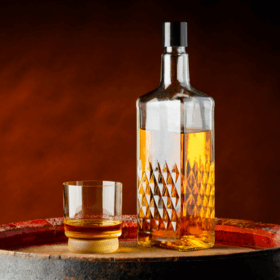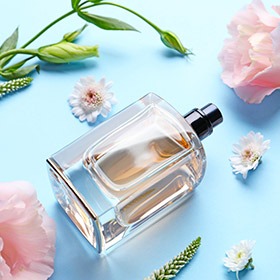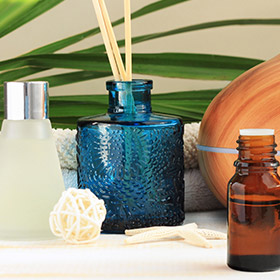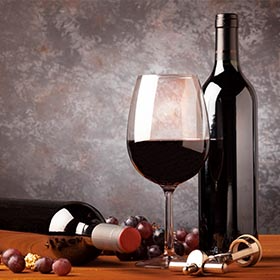Introduction
In the highly competitive global spirits industry, where packaging often determines shelf success, the selection of glass bottle color represents far more than an aesthetic choice. It goes beyond aesthetics—serving vital functions such as protecting the liquid from harmful UV rays, enhancing shelf appeal, and contributing to a brand’s visual identity. For players in the liquor packaging industry, including glass bottle retailers, wholesalers, and distributors, a well-informed choice of bottle color is fundamental to successful product positioning and preservation.
This comprehensive guide explores the science behind colored glass bottles, their market relevance, production methods, and key considerations when selecting the ideal color for different types of alcoholic beverages. It also introduces Roetell Glass, a leading glass bottle manufacturer and liquor bottle manufacturer, specializing in custom glass bottles for liquor that merge form and function in premium packaging solutions.
The Science Behind Glass Bottle Colors
How Glass Gets Its Color
Glass derives its color from metal oxides and other compounds added during its production. These additives interact with the silica-based mixture during the melting phase, imparting distinctive hues based on their chemical properties:
Iron oxide: Produces green glass, widely used in wine and some spirits.
Sulfur and carbon: Combine to produce amber or brown glass, ideal for UV protection.
Cobalt oxide: Gives a rich blue color, often used in decorative or luxury packaging.
Chromium: Can create shades ranging from green to black.
Glass coloration falls into two categories:
Intrinsic coloration: Where color is integrated into the glass matrix.
Surface coating: Where color is applied post-production using enamel, lacquer, or sprays. While less durable, surface coatings allow for greater customization.
The most common glass colors for liquor bottles include:
Flint (Clear): Offers full visibility of the product but no UV protection.
Amber (Brown): Known for its light-blocking properties and vintage appeal.
Green: Balances visibility and UV protection.
Blue and Black: Premium aesthetics; signal exclusivity and uniqueness.

UV Protection and Liquor Preservation
Light, especially ultraviolet (UV) radiation, can significantly degrade alcoholic beverages. UV rays can break down essential compounds, leading to oxidation, altered flavor profiles, and reduced shelf life. For example, whiskey and wine contain aromatic compounds that are light-sensitive.
Research by the Institute of Food Science and Technology indicates that spirits stored in clear glass under fluorescent lighting lose up to 20% of key aroma compounds within just 60 days. Colored bottles, particularly amber and green, mitigate this effect effectively:
Amber glass blocks over 90% of UV radiation.
Green glass offers moderate protection, typically 50–70% UV blockage.
Flint glass offers negligible protection and is best used for spirits not affected by light or when paired with secondary packaging.
This is why liquor bottle manufacturers and liquor rum brandy glass bottle factories frequently use amber or green bottles for whiskey, brandy, and rum.
Glass Color | UV Transmission (%) | Visible Light Transmission (%) | Primary Absorbance Range |
Flint | 85-90 | 90-92 | None significant |
Amber | 5-10 | 40-50 | <450nm |
Green | 30-50 | 70-80 | 300-400nm, 600-700nm |
Blue | 50-60 | 60-70 | 500-600nm |
Popular Glass Liquor Bottle Colors and Their Market Applications
Flint (Clear) Glass Bottles
Flint glass is popular for spirits such as vodka, gin, and flavored liqueurs. It showcases the color, clarity, and purity of the contents, often associated with high-end or innovative products.
Applications:
Vodka (especially in Eastern European markets)
Infused gins and liqueurs
Artisan spirits targeting upscale consumers
While offering premium shelf appeal, flint bottles are often paired with secondary packaging like boxes or shrink wraps to compensate for their lack of UV protection.
Amber (Brown) Glass Bottles
Amber bottles offer excellent UV protection, making them a top choice for spirits that are sensitive to light or aged in oak barrels. The rich, warm tone also enhances a rustic, traditional look often desired by heritage liquor brands.
Applications:
Whiskey and bourbon
Dark rum
Cognac and aged brandy
Many wholesale liquor rum brandy glass bottles are amber-hued to balance tradition with performance.
Black Glass Bottles
Black bottles convey exclusivity, mystery, and sophistication. Their opaque nature ensures complete UV protection, making them ideal for premium, aged, or limited-edition releases.
Applications:
High-end rum and tequila
Limited edition whiskey or gin
Collector and celebrity-endorsed spirits
These are often custom-made by gin vodka rum glass bottle manufacturers aiming to provide elite presentation.

Green Glass Bottles
Green glass bottles have long-standing associations with European herbal spirits and liqueurs. They offer moderate UV protection and a traditional, earthy aesthetic.
Applications:
Absinthe, chartreuse, and herbal liqueurs
Wine-based spirits
Classic gin and regional rums
Used frequently by empty glass rum wine bottle manufacturers, green bottles resonate with natural and heritage branding.
Blue Glass Bottles
Blue bottles immediately signal luxury and creativity. Their vibrant hue is associated with freshness, elegance, and premium positioning. While they offer less UV protection than amber, blue bottles are often chosen for brand differentiation.
Applications:
Premium vodka and gin
Flavored liqueurs and cocktail spirits
Seasonal and gift packaging
Blue glass is increasingly sought after in the fancy glass liquor bottles market.
Factors to Consider When Choosing Bottle Color
Type of Liquor
Spirit Category | Recommended Colors | Technical Rationale | Market Prevalence |
Whiskey/Bourbon | Amber (85%), Green (12%) | Prevents “light strike” oxidation | 92% market share |
Vodka | Flint (78%), Blue (15%) | Emphasizes clarity/purity | $12.3B segment |
Gin | Flint (65%), Green (25%) | Botanical visibility | +8% CAGR |
Rum (Aged) | Amber (68%), Green (22%) | Protects caramel colorants | 45% premium shelf |
Tequila (Reposado+) | Green (58%), Amber (30%) | Cultural tradition + UV blocking | 72% Jalisco brands |
Liqueurs | Custom (45%), Green (30%) | Brand differentiation | $8.4B market |
Data sourced from IWSR 2023 Spirits Packaging Report
Shelf Visibility and Aesthetic Appeal
Shelf visibility plays a vital role in consumer decision-making at the point of sale. A bottle’s ability to capture attention and communicate brand values visually can directly influence purchase intent. Clear and blue glass bottles, with their ability to refract and reflect retail lighting, excel in drawing attention and showcasing the product inside. Their transparency conveys purity, innovation, and openness—values that resonate with modern, design-conscious consumers.
In contrast, amber and black bottles lend an air of sophistication and maturity. These hues align with traditional, premium brands that emphasize legacy and craftsmanship. Black, especially, provides a dramatic visual break on the shelf and is often used for high-end, limited edition, or celebrity-branded spirits.
Green bottles offer a middle ground, suggesting natural ingredients, heritage, and authenticity. This makes them ideal for herbal liqueurs, traditional gins, and regionally recognized spirits.
Notably, consumer behavior studies indicate that colored bottles can enhance product recall by up to 40% over unlabeled or transparent alternatives. In a crowded retail environment, this enhanced visibility can provide a decisive advantage.
Target Market Demographics
Demographic targeting is essential when selecting bottle color. Younger consumers (aged 21–35) often seek bold, visually stimulating packaging. Blue and matte black glass bottles appeal to this demographic by offering a sense of exclusivity, trendiness, and modernity. These consumers also gravitate toward limited releases, making black or dark blue bottles particularly effective.
On the other hand, older consumers (aged 40+) tend to value tradition, quality, and familiarity. For this audience, amber and green bottles provide reassurance through classic cues and a connection to historical branding.
Regional preferences further guide decision-making:
Europe: Dominated by green and amber bottles, reflecting deep-rooted wine and spirit traditions.
Asia-Pacific: Prefers flint (clear) bottles due to the cultural importance of transparency and minimalism.
North America: Shows increasing interest in blue and black bottles, particularly in the craft and premium segments.
Understanding these preferences enables glass bottle manufacturers to align packaging with consumer expectations in each target market.

Cost Considerations in Colored Glass Production
The economics of colored glass production are shaped by the availability of raw materials, complexity of the coloring process, and production scale.
Flint glass is the most cost-effective option. Since no additives are required, it simplifies production and reduces costs, making it ideal for brands aiming to scale with minimal expenditure.
Amber and green glass require additional oxides but remain relatively affordable due to the widespread availability of sulfur and iron compounds. These colors strike a balance between protection, aesthetics, and cost.
Blue and black glass are among the most expensive. Cobalt oxide and chromium compounds are costly, and these colors often require higher firing temperatures and longer cooling periods to maintain uniformity. Additionally, the demand for consistency in luxury packaging adds quality control expenses.
Despite the added costs, many brands view investment in custom colors as essential to building a strong, differentiated identity. In markets where shelf impact equates to brand value, the ROI on colored glass packaging—especially for custom liquor bottles, fancy alcohol bottles, or cool alcohol bottles—can be substantial.
The Manufacturing Process of Colored Glass Liquor Bottles
How Glass Color is Made
The coloration of glass bottles is achieved during the high-temperature melting process, where specific metal oxides are introduced to the raw material mix of silica sand, soda ash, and limestone. These oxides alter the wavelength of light absorbed and reflected by the final glass product, thereby producing various hues. For example, iron oxide yields green tones, cobalt oxide results in deep blues, and sulfur compounds create amber shades.
There are two primary approaches to coloring glass:
Intrinsic coloring: The color is embedded within the glass matrix, ensuring durability, uniformity, and resistance to scratches and wear.
Surface coating: A colored layer is applied after the bottle is formed. While this method offers greater flexibility in design, the color may degrade over time due to abrasion or environmental exposure.
For applications demanding long-term color integrity—especially in high-turnover or export-driven liquor markets—intrinsically colored glass is typically preferred.
Color Consistency in Mass Production
Achieving and maintaining color uniformity across large production runs is a complex yet critical aspect of manufacturing colored liquor bottles. Inconsistent coloring can compromise brand identity, create aesthetic discrepancies on retail shelves, and even cause compliance issues in regulated markets.
To ensure batch-to-batch consistency, leading manufacturers employ:
Automated pigment dosing systems for precise oxide measurements
Spectrophotometric analysis to detect even minor deviations in color
Standardized quality control protocols across production shifts
This level of quality control is essential for high-volume product lines such as 750ml glass liquor bottles wholesale, 1 liter alcohol bottles, and 200 ml liquor bottles, which are distributed across global markets.
Decoration Techniques That Complement Bottle Colors
Once the base color is established, decorative enhancements can further elevate the bottle’s visual appeal and reinforce brand messaging. Some of the most effective techniques include:
Frosting: Creates a matte or frosted texture, often used on clear or colored bottles to soften the visual tone and add sophistication.
Spray painting: Allows for gradient effects, color blocking, or vibrant hues beyond traditional oxides.
Screen printing: Applies high-definition graphics, brand names, and compliance markings directly onto the bottle surface.
Hot stamping: Uses heat and metallic foils to imprint logos or accent elements with gold, silver, or copper finishes.
These decoration methods, when paired with well-designed closures and label applications, produce distinctive and cool liquor bottles, enhancing shelf impact and consumer appeal in both standard and premium product categories.
Why Choose Roetell Glass for Your Liquor Bottle Needs?
With over 30 years of specialized expertise, Roetell Glass stands at the forefront of global liquor packaging as a trusted liquor bottle manufacturer and glass bottle manufacturer headquartered in China. We deliver flexible, end-to-end packaging solutions tailored to your brand’s identity—backed by precision manufacturing and fast, global-ready logistics.
8 fully automated production lines delivering 400,000+ bottles daily
Rapid lead times to meet tight deadlines and seasonal launches
Flexible OEM & ODM services—from conceptual design to finished product
Custom mold development for round, square, and uniquely shaped liquor bottles
Global certifications: FDA, SGS, LFGB for safe, export-ready packaging
Low MOQs with high customization flexibility, ideal for both startups and established brands
One-stop accessory support, including customized caps, labels, and gift packaging
Custom glass bottles for liquor—engineered to reflect your brand’s premium value
Fancy liquor bottles and alcohol glass bottles in a wide range of volumes and shapes
Bulk and wholesale liquor bottles for sale, ready for worldwide distribution
Cool alcohol bottles ideal for high-end spirits, seasonal campaigns, or collectible releases
Looking for packaging that stands out on the shelf and performs in transit? Contact Roetell today to customize your perfect liquor packaging solution and experience reliable production, short lead times, and a seamless buying process from concept to container.
Conclusion
The color of your liquor bottle is more than a visual detail—it’s a strategic decision that affects branding, preservation, and market appeal. With growing demand for custom liquor bottle solutions and increasing competition in spirits packaging, choosing the right color has never been more critical.
Whether you’re sourcing for alcohol bottle wholesalers, designing liqueur bottles, or building a new spirit bottle line, Roetell Glass provides the technical expertise, manufacturing capability, and design support you need.
As a trusted liquor rum brandy glass bottle factory, we bring your brand to life in every bottle.
Contact Roetell today to explore our wide range of glass spirit bottles and elevate your packaging strategy with premium, custom-colored solutions.









